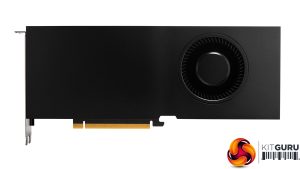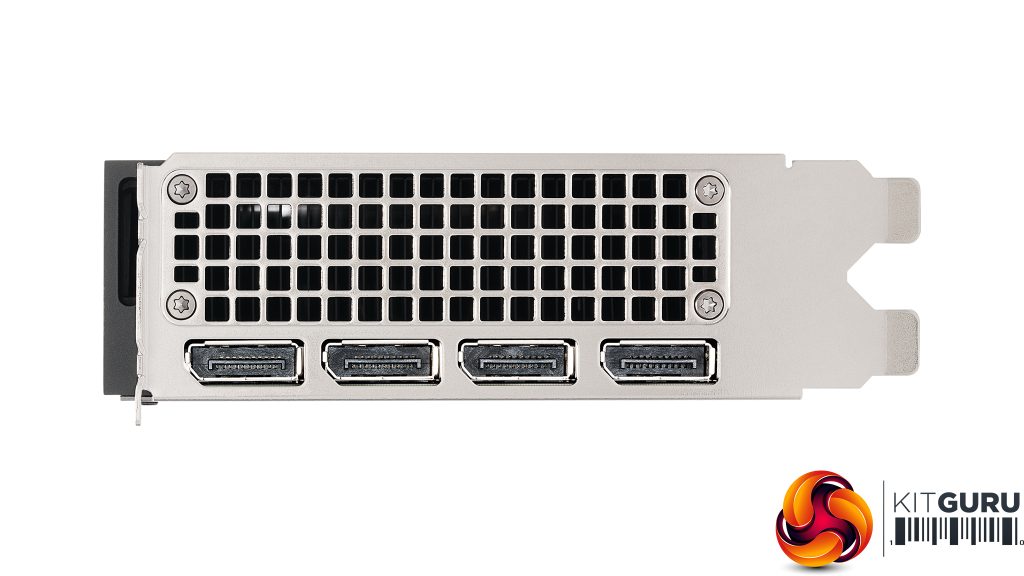The PNY NVIDIA RTX A4500 is a dual-width card that doesn't shout its name loudly. In fact, you have to look quite closely to even see the model number on the top edge near the video ports, and the NVIDIA logo isn't that much bigger. This is a dual-slot card, like the A5000, whereas the A4000 only requires a single slot.
The A4500 supports PCI Express 4.0. The Ampere-generation NVIDIA cards were the first to do so. There are 7,168 CUDA cores, which is actually fewer than the GeForce GTX 3080 to which it is related, but will still offer loads of processing power. The A5000 has 8,192 CUDA cores like the 3080, and the A4000 only has 6,144. So, in theory, brute GPU performance should be somewhere in between the two. The GPU runs at a base 1,170MHz (although it can drop lower, as shown by GPU-Z) and can boost up to 1,695MHz. This enables it to deliver 23.7TFLOPS of single precision compute, where the A4000 only manages 19.17TFLOPS but the A5000 can achieve 27.772TFLOPS.
The memory allocation of 20GB GDDR6 sits precisely in between the RTX A4000 and A5000, too, which have 16GB and 24GB respectively. However, this might be the area that convinces you to go for the A4500 over the A4000, because the A4500 supports NVLink 3.0 where the A4000 doesn't. This means you that you can join two cards together and share their memory, giving you a 40GB pool for both to use. For GPU compute with large datasets, this could be very handy. The memory bus is 320-bit (compared to 256-bit for the A4000 and 384-bit for the A5000) with a 2,000MHz base clock. That is the same as the A5000 but the A4000's memory only runs at 1,750MHz. The result is quite a lot more bandwidth – 640GB/sec versus 448GB/sec. The A5000 of course trounces both with 768GB/sec.
TechPowerUp GPU-Z has no problem detecting the features of this card, because the underlying GPU has been around for a while.
NVIDIA hasn't gone for smaller Mini-DisplayPort connections, unlike AMD does with some of its professional cards. But you still get four full-sized DisplayPort 1.4 interfaces, each of which supports up to 5K at the same time, so you could create a huge 10K array with four screens. Alternatively, a single 8K monitor can be driven.
All the usual acceleration APIs are supported, including OpenCL 3.0, OpenGL 4.6, Vulkan 1.3 and DirectX 12.
The A4500 has a 200W TDP, which is relatively frugal or such a powerful card, so if you use NVLink 3.0 to combine two together, you're still only consuming 400W, which is feasible with a reasonably potent PSU. Only one eight-pin PCI Express power connection is required, not an additional six-pin one, which the AMD Radeon Pro W6800 needs, for example.
 KitGuru KitGuru.net – Tech News | Hardware News | Hardware Reviews | IOS | Mobile | Gaming | Graphics Cards
KitGuru KitGuru.net – Tech News | Hardware News | Hardware Reviews | IOS | Mobile | Gaming | Graphics Cards









